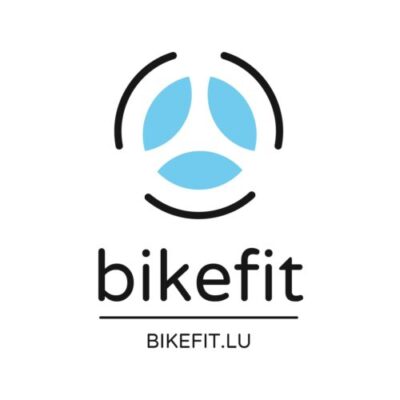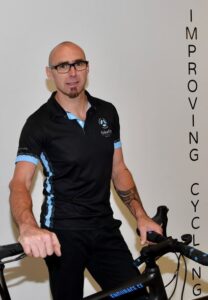
Embark on a personalized and dynamic journey with a professional postural assessment designed to enhance your sporting experience. Whether you aim for optimal comfort, peak performance, or the prevention of injuries, I’m here to assist you. If you’re experiencing discomfort or pain on your bike, rest assured that I’m committed to improving your cycling experience, catering to individuals of all levels and practice types.
Experience more comfort, exert less effort, and reduce the risk of injuries with a dynamic postural assessment.
Bernard Hinault once said, ‘Only 2% of cyclists need a custom bike. A custom position, on the other hand, everyone must have.’
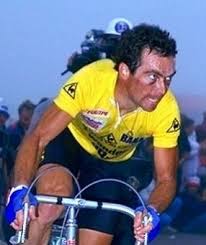
Indeed, a solid posture is the foundation of every cycling practice. Whether you seek enhanced performance or greater comfort, the postural assessment provides both. Optimizing the connection between you and your bike is the crucial element for achieving peak performance. After all, effectiveness is unattainable without comfort.
Comfort + Efficiency = Performance.
Even if your primary focus is on performance, your position must be sufficiently comfortable to be maintained without wasting energy on a posture that doesn’t fit. It’s the bike that should adapt to YOU, not the other way around. The postural assessment involves analyzing your posture and technique on your bike or a fit bike to optimize you for peak performance and minimize the risk of overload injuries. It places you as a cyclist at the center of the analysis, striving to achieve harmony between you and your bike.
The proposed method is dynamic in two ways:
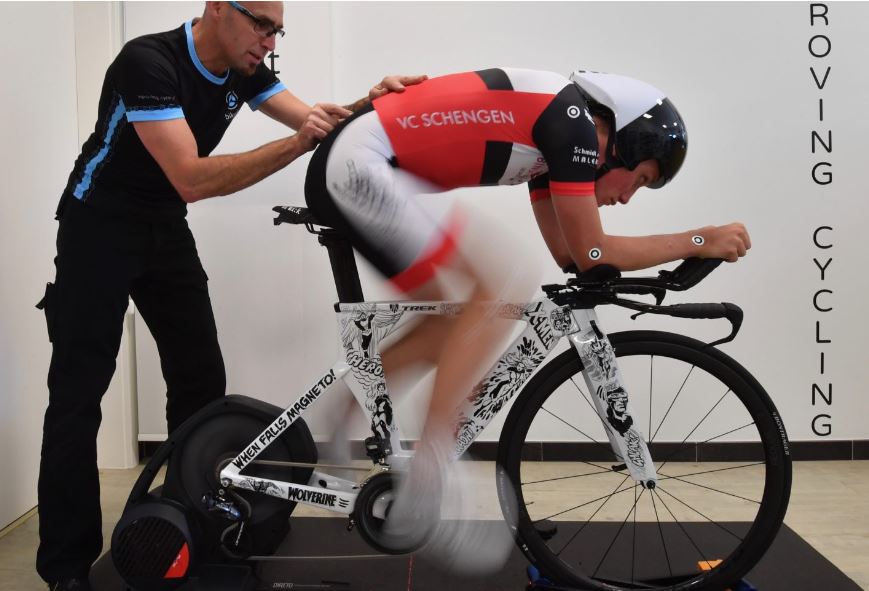
- The postural assessment occurs in motion, pedaling on your own bike on a trainer or on a fit bike.
- You are actively involved in the process. The art of fitting involves juggling objective observations and subjective sensations. This makes each session unique and every postural assessment exciting.
In the early days, postural assessments were primarily sought by particularly ambitious cyclists, while recreational riders often hesitated, wrongly believing they weren’t skilled enough or didn’t need it. This perception has evolved significantly, especially in the last decade, with the growing number of cyclists and a better understanding of the importance of a position tailored to their practice.
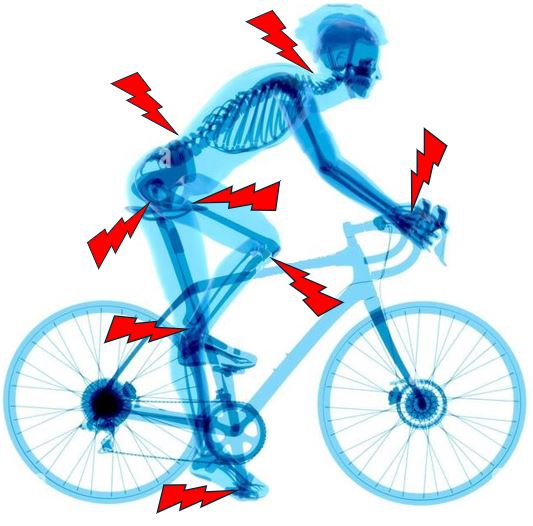
For this reason, a serious, professional postural assessment is indispensable. Statistics indicate that 85% of cyclists could be susceptible to overload injuries. Considering the number of crank turns in an hour (5,400 for a pedaling frequency of 90 rpm) and the hours spent on the bike, it becomes evident that a poor fit can lead to damage.
The postural assessment also serves to prevent such injuries. If damage has already occurred, it aids in identifying the cause, often becoming a crucial step in treatment. Correct diagnosis and treatment that address the root cause are essential, as solely treating symptoms is usually ineffective. If initial treatments prove unsatisfactory, exploration of the cyclist’s bike, settings, and technique becomes necessary.
Your optimal and biomechanically correct posture is influenced by various factors:
Morphological Characteristics: Includes factors like height, flexibility, measurements, and identifying any asymmetries.
Stability: Emphasizes the importance of overall stability. For instance, having powerful legs is beneficial, but poor stability in the pelvis and trunk can be likened to firing a cannon from a canoe.
Traumatological History: Encompasses direct traumas, overload injuries, and surgical interventions that might impact the current condition.
Previous Sports Experience: Considers the individual’s history in sports, providing insights into their familiarity with physical activities.
Practice: Reflects the range your practices, from leisure to competitive sports, encompassing road cycling, mountain biking, triathlon, cyclocross, hiking, and more.
Ambitions: Considers your goals, both short and long term, influencing the desired level of performance and achievement.
Sensations: Encompasses subjective feelings during cycling, including discomfort, pain, and overall efficiency.
Technique: Acknowledges the bidirectional relationship between technique and position, recognizing that one influences the other.
Postural assessment is an ongoing process and shouldn’t be considered complete after the first session. Your body evolves, your weight changes, flexibility varies throughout the day, work and activities influence your sensations. Even an extended break can lead to a significant shift where you no longer recognize yourself or your bike and position.
In this sense, postural assessment is a journey, and I would be delighted if we embarked on it together.
